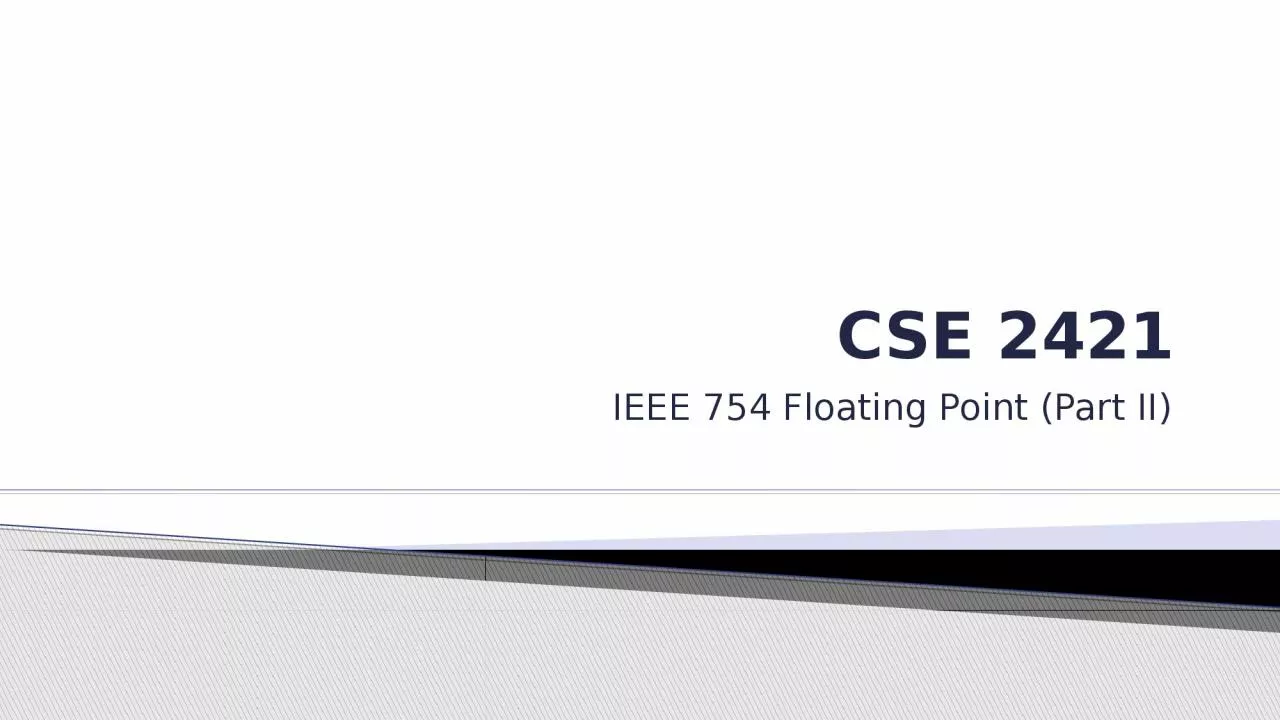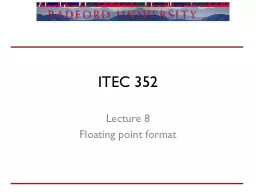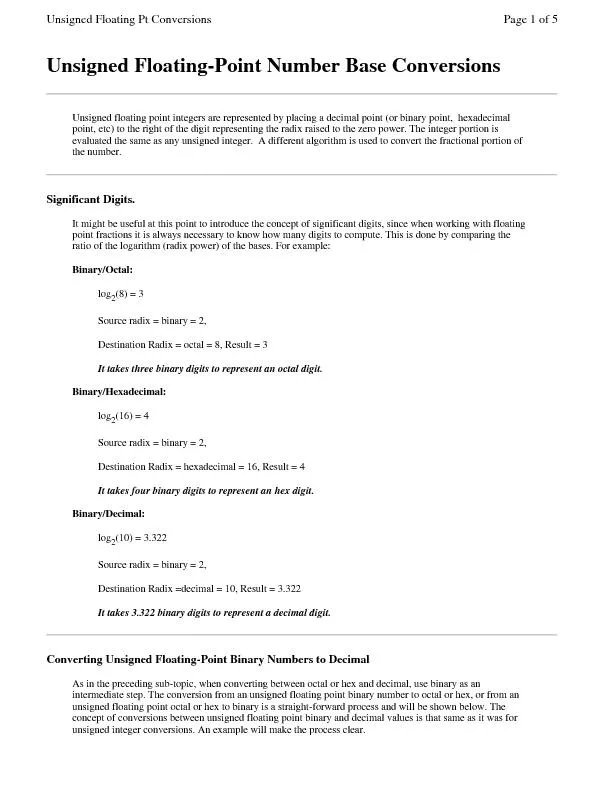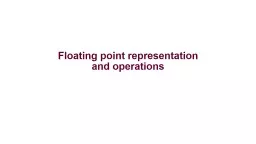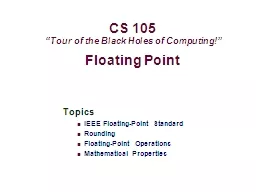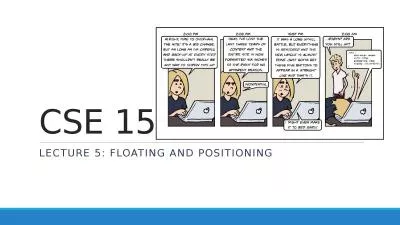PPT-CSE 2421 IEEE 754 Floating Point (Part II)
Author : yvonne | Published Date : 2023-10-27
IEEE 754 types of real number values IEEE uses three different encodings to represent real values 1 Denormalized values These are extremely small values very
Presentation Embed Code
Download Presentation
Download Presentation The PPT/PDF document "CSE 2421 IEEE 754 Floating Point (Part I..." is the property of its rightful owner. Permission is granted to download and print the materials on this website for personal, non-commercial use only, and to display it on your personal computer provided you do not modify the materials and that you retain all copyright notices contained in the materials. By downloading content from our website, you accept the terms of this agreement.
CSE 2421 IEEE 754 Floating Point (Part II): Transcript
Download Rules Of Document
"CSE 2421 IEEE 754 Floating Point (Part II)"The content belongs to its owner. You may download and print it for personal use, without modification, and keep all copyright notices. By downloading, you agree to these terms.
Related Documents

